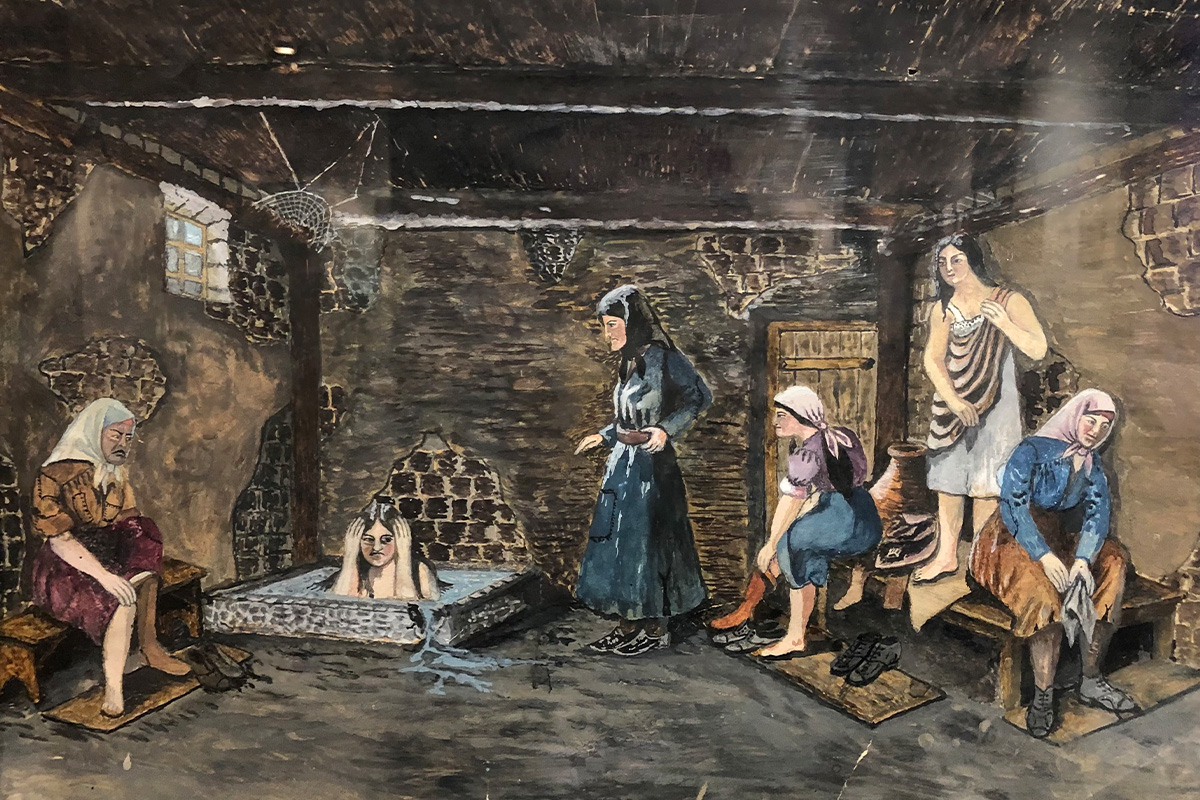Shalom Koboshvili become known as Georgia’s first Jewish painter only after his death in 1941, largely because he produced most of his work in secret. Painting was not an approved pastime in his conservative Georgian-Jewish community, and so he painted while working the night shifts at Georgia’s bygone Jewish ethnographic museum, one of the many jobs he took to support his family.
Now, the sixty paintings that Koboshvili produced in his final years are displayed in an exhibition at the Georgian National Museum, curated by fellow Georgian Jewish art historian Lela Tsitsuashvili. Painted from memory, they represent some of the only known portraits of the little-known Jewish community of Akhaltsikhe, where Koboshvili lived as a boy.
The exhibit also includes historical clothing, artifacts and the works of other Georgian Jewish painters, alongside animations, musical installations and a documentary exploring Akhaltsikhe, where only one Jewish family remains.
Tsitsuashvili spoke with Hey Alma about her engagement with Koboshvili’s legacy, and how it fits into her own work and Georgian Jewish identity.
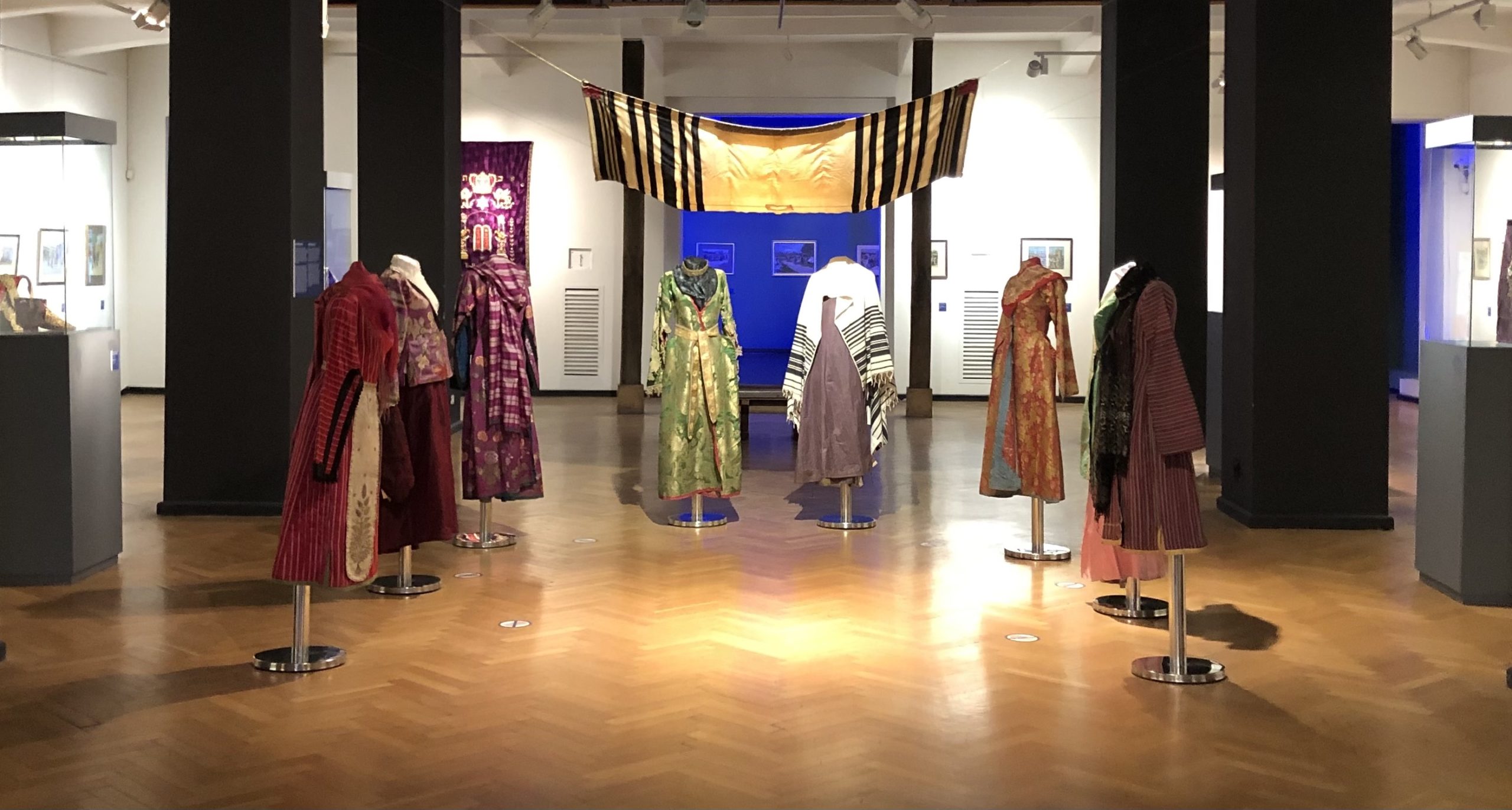
This conversation has been lightly edited and condensed for clarity.
What kind of challenges have you faced focusing on Koboshvili’s paintings?
It wasn’t easy to do this research. When I started many years ago it was a difficult period for Georgia economically and all of the collections were in poor condition. I began with Koboshvili’s paintings, but I realized it didn’t matter that I grew up in a Jewish family; I needed more knowledge to understand the background depicted in Koboshvili’s works.
I started to research not only Koboshvili’s works but all of the Jewish collections from the former Jewish museum. From 1933 to 1936 the museum organized historical and ethnographic expeditions to regions in Georgia where Jews lived. Very famous historians and ethnographers participated, among them Georgian painters. We exhibited some of the artifacts from these expeditions, and everything in the exhibition is from the former Jewish museum. I had different projects that made it possible to restore and conserve these collections.
It was important for me not only to exhibit them, but that they survive.
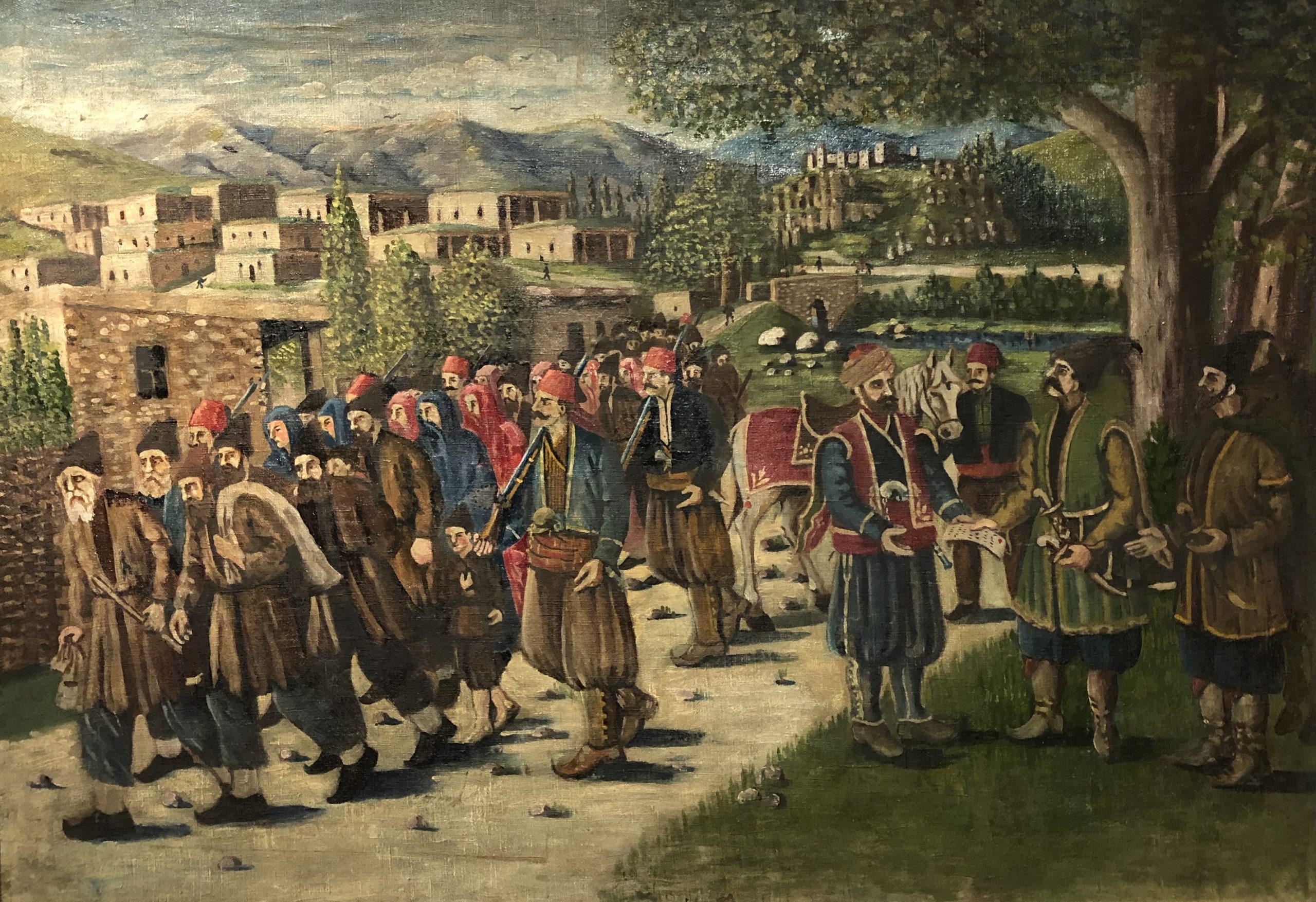
What happened to his works after his death? How did Koboshvili initially become known?
Koboshvili started to paint very late, at 61 years old. In 1940, the administration of the Jewish museum in Tbilisi organized his personal exhibition, but it was never shown as unfortunately he passed away in 1941. This exhibition stayed in the museum’s storage.
In 1952, the museum was closed as a center of Zionism, and the building, which was housed in a synagogue, was confiscated. [The Soviet government at this time had a strict anti-Zionist policy; many Jewish cultural centers were shut down, and many Jewish individuals targeted, for supposed Zionist activity.] The family had nothing. Only the museum had what he created during the last three years of his life, which was about 60 works.
When the museum was closed, the collection was sold, and split between different museums in Georgia, mainly the Georgian National Museum’s painting collection and the Simon Janashia Museum. There was almost no information about Koboshvili’s work, or other Jewish collections. It was almost forgotten. There were some who had memories of this museum, but it was totally unknown, even for specialists. Nobody was paying attention.
Given how unknown his work had become, how did you first come to discover Shalom Koboshvili? What is your own background in art history?
I graduated from St. Petersburg Academy of Art, where I focused on technological research, with an expertise in Russian and European art in the 18th and 19th centuries. Because I’m a Jew myself, I decided to research Jewish art. Maybe it was the voice of my blood.
My interest in Koboshvili started a long time ago, in 1995, when I decided to focus my studies on Jewish culture. One of the directors of the Jewish museum where his works were kept was my grandmother’s uncle. At home we had his article about Koboshvili, published in 1940.
I asked the former director of the Jewish museum where I could see the works of Shalom Koboshvili. He has the same family name as me, Tsitsuashvili, though we are not relatives, but my father knew him. I then got special permission to see these works in the storage of the Georgian National Museum. There were also a few Koboshvili paintings displayed at the Museum of Friendship, in Tbilisi, a museum from the 1980s about minorities in Georgia. But even specialists had no information about him. When I got the permission to see these works they were in poor conditions. That was the 1990s, after civil war in Georgia. That was the moment when that I decided to research and take care of this collection. I decided also to dedicate my dissertation to Koboshvili, and his art history.
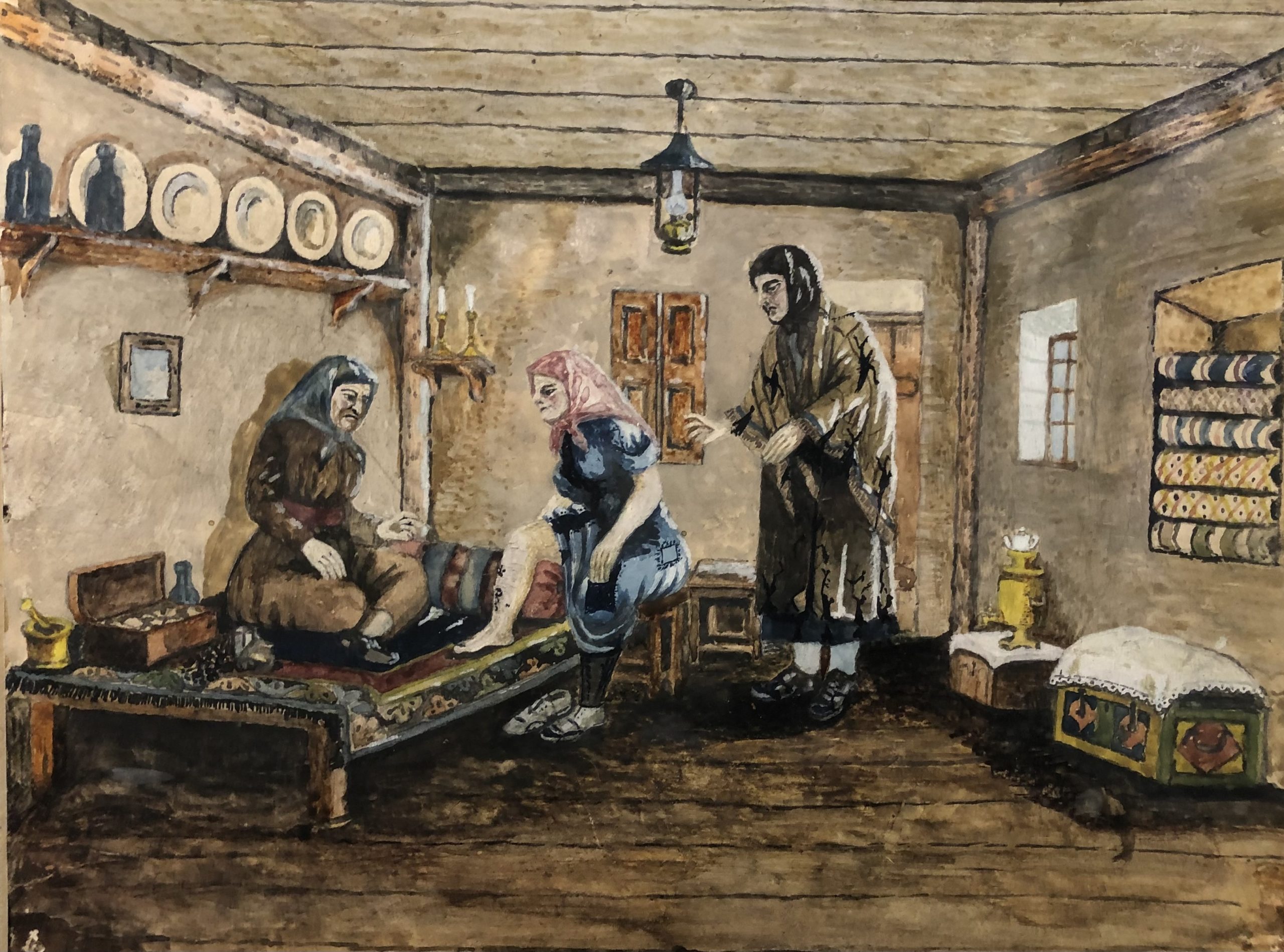
What is the Jewish history in Georgia, and what is the importance of Akhaltsikhe in Georgian Jewish history?
The Jewish community of Akhaltsikhe was wealthy. The Grand Synagogue in Tbilisi is still called Akhaltsikhe Synagogue, as Jews from Akhaltsikhe supported the building of the synagogue in 1904.
According to Georgian manuscripts from the 10th to 11th centuries, Jews settled in Georgia in the 6th century B.C. after the Babylonian exile. Nobody knows really. We have no artifacts, but it’s mentioned in the main historical sources of Georgia.
After that there were local migrations inside the country. Jews settled in almost all regions in Georgia. There were very interesting assimilations with local cultures, even dialects, the same with Akhaltsikhe. Some people think Sephardic Jews came through Turkey and settled in Georgia in the 17th century. They lived mainly in Akhaltsikhe, as it is in the eastern region, bordering Turkey, and for a long time it was under the protection of the Ottoman Empire. The Ottoman and Muslim influence can be seen in Koboshvili’s works. For example, there are bridal dresses, worn in the 19th century, in his paintings from Akhaltsikhe. They’re called “golden robes.”
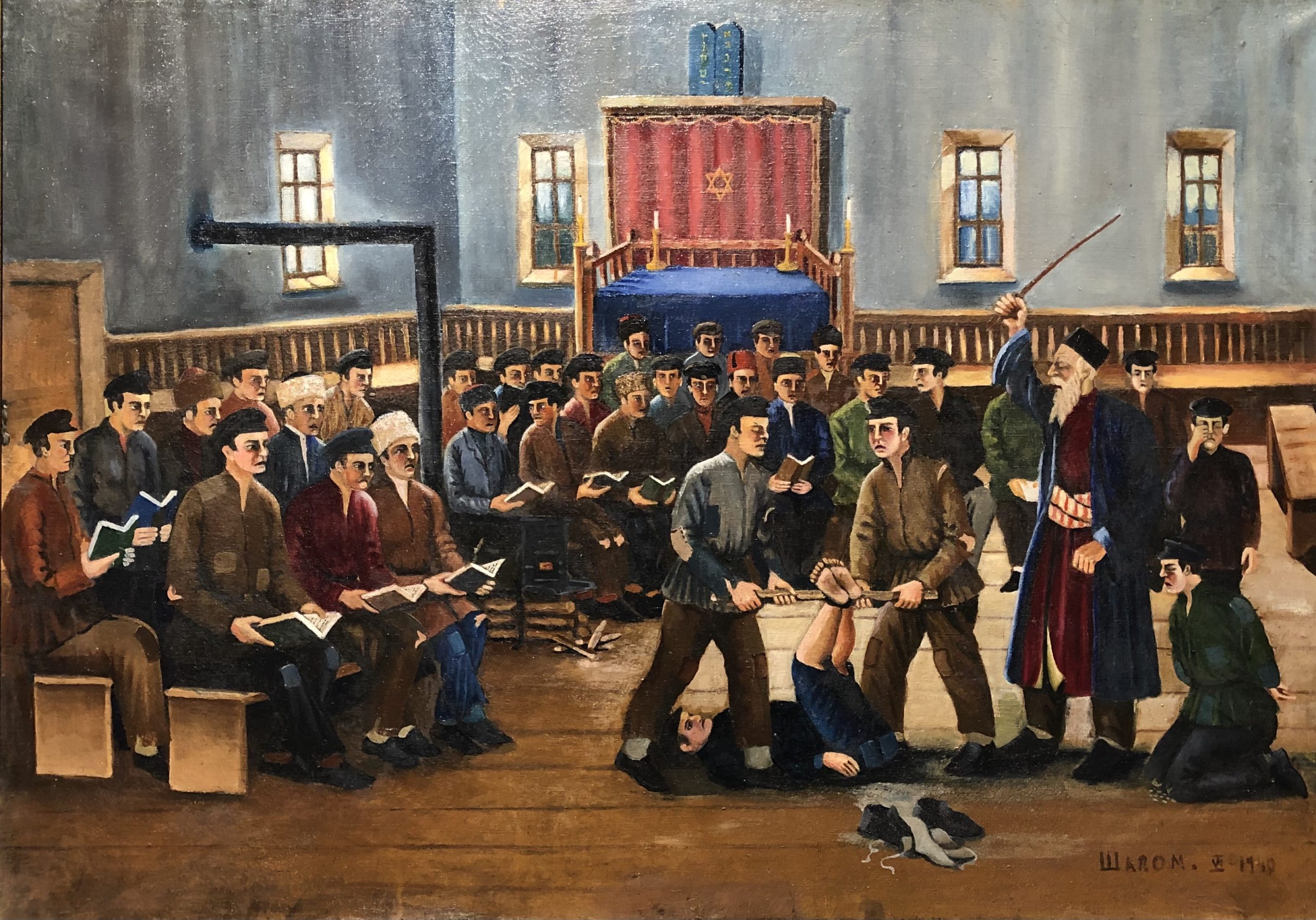
What made you so interested in Koboshvili’s work specifically? Why did you find it so important to preserve?
I understood that these works are not just artworks. Koboshvili is much more than a painter. He was self-taught. His artistic style isn’t incredible for art historians, but it is a history of Jewish life in Georgia.
His work is narrative. He was telling stories in a very simple way. If you pay attention in Koboshvili’s paintings, you often notice a young boy. I think he depicted himself. He started to draw when he was young, but his religious parents prohibited him to draw according to their beliefs in Judaism. That’s why he never practiced drawing.
When he started drawing again in the 1930s, he did not depict contemporary life. There are some exceptions, but mostly he revived his childhood memories connected with Akhaltsikhe.
You can learn more about the exhibit and see some selections of Koboshvili’s work here.
